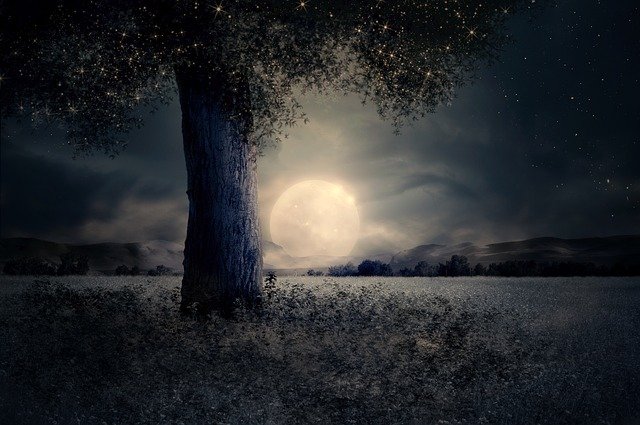The Brahmaur gathered into two circles, one inside the other. The inner circle faced the outer circle. Everyone stood still, waiting with joyous anticipation. Great violins began to play. The men droned in low lyrical tones keeping in harmony with the instruments. Pipes joined in, followed by the women who sang the melody.
The men and women continued their song, turning their heads up to look at the full moon, their polished horns soflty gleaming in the moonlight. Then, the drums started to play and the brahmaur began to dance.
Every hoof moved in step with every other hoof, following the beat of the drums. The outer circle moved clockwise while the inner circle moved counter-clockwise. Still singing, the dancers turned about four times as they moved. Then, the dancers stopped their singing. A lone pair of brahmaur, one man and one woman, continued the song from where they stood near the music players.
The circle of dancers moved together, braiding through each other still circling in counter directions. As they passed, the men tapped horns while the women dipped their horns to each other. On the last long notes, the dancers formed back into their original circles facing each other. Each one stomped a hoof on the last beat of the drums before going still.
Why the Moon?
Brahmaur see no better at night than humans yet all their most holy occassions happen beneath a full moon. On cloudy nights when the moon cannot be seen, so torches are set on long metal poles. The Brahmaur arrive carrying
corn husk rushlights. Despite the difficulties of traveling at night, there is nothing in the sky more precious to the Brahmaur than the moon.
The moon is called
Godsheim and this is where the gods live when they are not taking the occassional wander about the world. T'Ar, the beloved god of the Brahmaur, returned to Godsheim during the Days of Legend. It is to T'Ar, through the moon, that they celebrate.
The Full Moon
The Brahmaur believe that when the moon is full, it is open so T'Ar can hear them. Every full-moon gathering is a sermon carried out with hymns and the sharing of sweetbreads and ciders. When the weather is bad, these sermons are held in the home and led by the family elder.
On the spring and fall equinoxes, these become a three night festival.
The first night is a fair, complete with entertainers, cart sellers, and games.
The second night, the actual equinox, there is a sermon led by the clerics. As all sermons under the moon, there are sweetbreads, ciders and hymns. When the sermon ends, all the adult Brahmaur gather into two circles, one inside the other, for a beautious song and dance. The older children gather the younger children to watch and dream of the day they, too, can join in.
On the third night, there is a simple sermon of hope and farewell. Friends exchange gifts. The clerics give every family elder new sermon scrolls and hymns. Then everyone starts to sing the Parting Hymn and leaves, singing their way home.
On a hill far away stands an old bristlecone, holding the shine of the moon.
And I love that old tree, where the world came to see, we are the people of T'Ar ...— a young Brahmaur proudly singing the first lines of the Parting Hymn





Nice article, I like the idea of the full moon allowing the god to listen better, and the way you use the horns in the dance :D
Thanx!
PANGORIO
andHYPNOSIUM